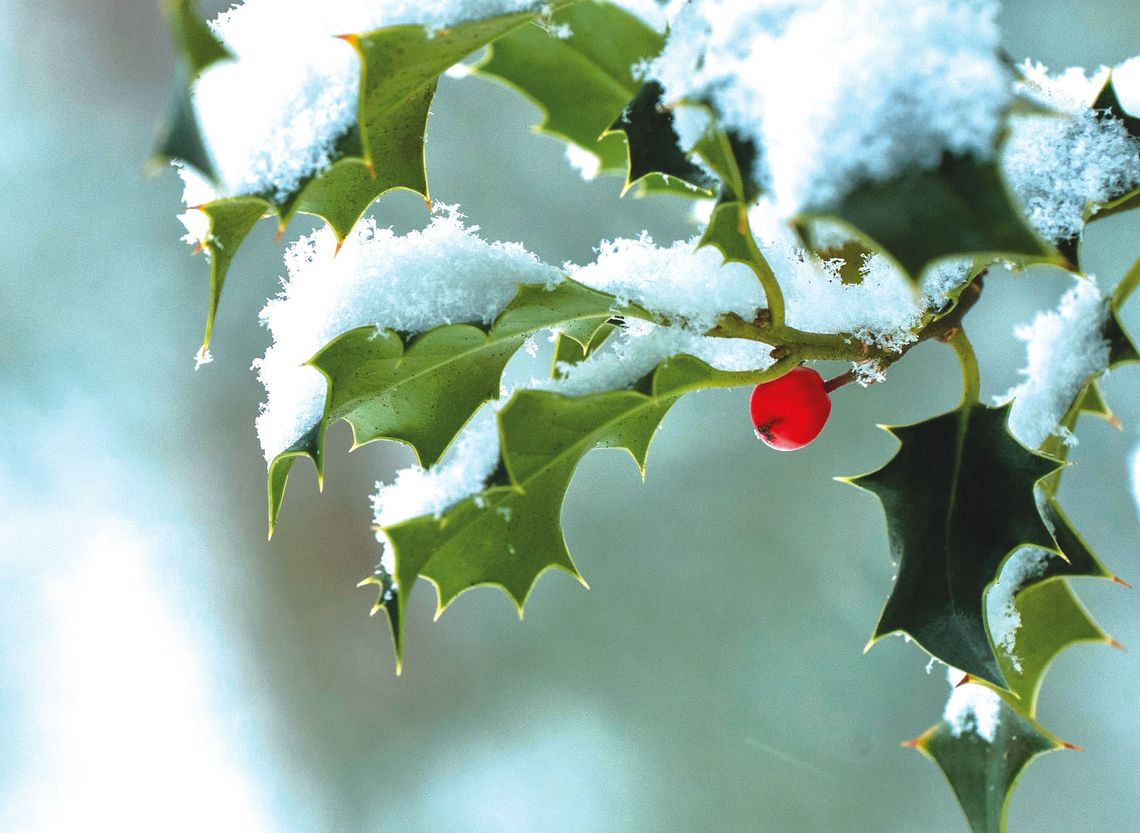Winter’s cold injuries can lead to future plant problems. In May, garden plants will be feeling the effects of this winter’s cold weather for months or even years to come. Problems may appear at any time, from June through September and even in spring of next year. Wilting leaves or a thinning canopy may be seen next summer. These symptoms may have been caused by last winter’s hardships.
Unlike animals that can escape to safety when temperatures drop, plants withstand whatever comes their way. Plants prepare for colder weather by reducing the amount of free water in their water (xylem) and food (phloem) carrying vessels.
If plants don’t reduce the amount of free water, ice forms between the plant’s cells. The ice draws water from the cells themselves, causing the cells to weaken or collapse.
Injured phloem will carry fewer nutrients to the roots, stunting root growth. Injured xylem will carry less water to the branches and leaves. Both of these problems limit the supply of much needed water and salts to the leaves.
Plants that had little time to prepare for cold temperatures will be more severely injured than those that cooled more slowly. Plants that formed tender leaves in response to late prunings or a fall application of nitrogen are particularly susceptible to cold damage, as are plants that have been under stress, such as drought.
Weakened plants may seem to emerge from dormancy and flower just fine, because those buds were formed last year, and the plant set aside necessary nutrients. Once the plant uses up those resources, symptoms may occur.
Symptoms of cold damage may be worse in hot summer weather. Foliage needs extra water during hot weather to help keep the plant cool. In a cold-injured plant, not enough water and nutrients can make it past the injured areas to replace this water. Such damage may appear in branches here and there.
We may see signs of cold damage in almost any plant part. Roots, especially young feeder roots, may be discolored and rot away. Twigs, branches or the trunk may have split bark, separation of the bark from the cambium layer, and even sun scalding. Leaves or needles may show tip burn. Fruit may be smaller.
The most serious kind of freeze damage is cambial browning. The cambium layer is immediately under the bark, between the woody xylem on the inside and the phloem towards the outside. It brings about continued plant growth. If you look inside a cold split or an exploratory bark and you see browning or even worse, smell a sour smell, the plant is seriously damaged and will likely not live.
Now it is important to protect the plants from further stress. This means proper watering, proper fertilization and pruning to provide enough moisture through the dry periods of the year. If leaves show signs of wilting in summer’s heat despite adequate soil moisture, misting the foliage will help. Just make sure you do not over water the plant.
Check for cold damage signs this spring as you clean your garden. Remove affected branches and limbs. You can’t do anything for split trunks. Prune dead wood back to healthy areas once leafing has occurred. This will not only improve the looks of the plant but keep out insects and diseases.
Source: The Plant Doctor, “Cold Injury”, Mississippi State University Extension, Alan Henn, Information Sheet 1663


Comment
Comments